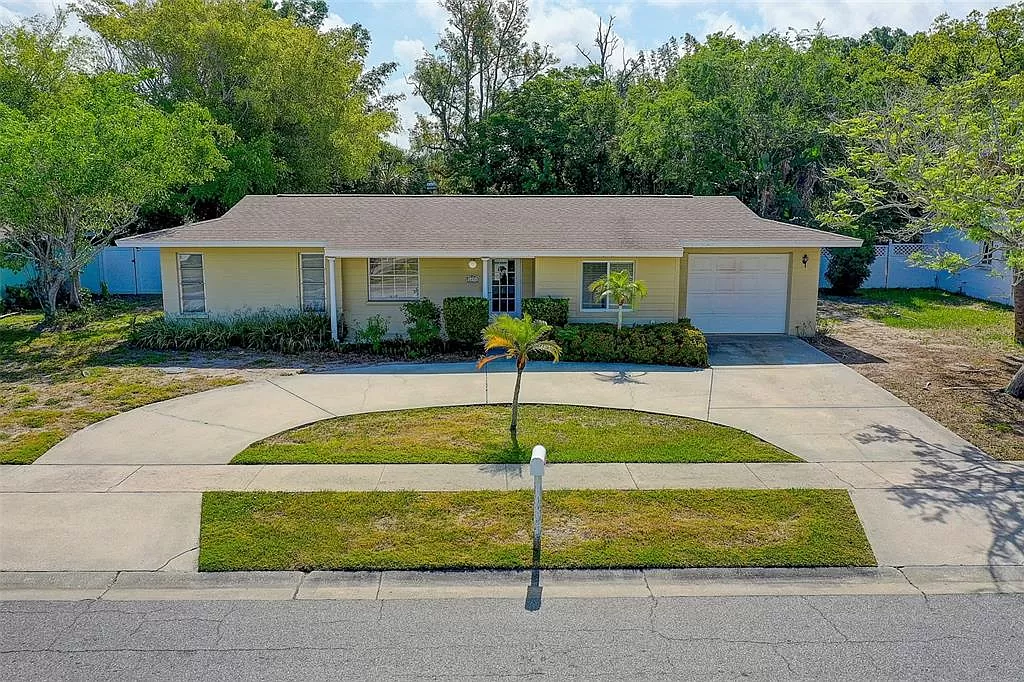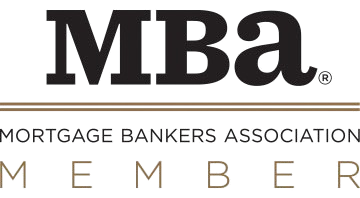Editorial Integrity
Making informed real estate decisions starts with having the right knowledge. At HomeAbroad, we offer US mortgage products for foreign nationals & investors and have a network of 500+ expert HomeAbroad real estate agents to provide the expertise you need. Our content is written by licensed mortgage experts and seasoned real estate agents who share insights from their experience, helping thousands like you. Our strict editorial process ensures you receive reliable and accurate information.
Key Takeaways:
➡️ A 1031 Exchange allows the deferral of capital gains taxes when reinvesting in a like-kind property.
➡️ Both the relinquished and replacement property must be for investment or business purposes.
➡️ Investors must follow the IRS's 45-day and 180-day time limits.
A 1031 Exchange is a valuable tool for real estate investors looking to defer capital gains taxes when selling an investment property.
By reinvesting the sale proceeds into a like-kind property, investors can continue to grow their wealth without the immediate tax burden. This tax-deferral mechanism is especially useful for both domestic and foreign buyers unfamiliar with US tax laws.
In this article, we’ll see how the 1031 Exchange works, the types of properties that qualify, and the benefits for real estate investors. We’ll also cover key rules foreign buyers should be aware of and walk through a real-life example to help illustrate the process.
Table of Contents
What is a 1031 Exchange and How Does it Work?
A 1031 Exchange, outlined under IRC Section 1031, allows an investor to sell a relinquished property and reinvest the sale proceeds into a replacement property—all while deferring taxes on the capital gains.
The term “like-kind” means the properties must be of the same nature, such as real property used for investment purposes, whether it’s a rental property, business property, or multifamily building.
The key to the exchange is using a qualified intermediary who holds the exchange funds and ensures the transaction complies with IRS regulations.
This third party helps facilitate the exchange process and ensures the investor does not receive the funds directly, which would trigger an immediate tax liability.
Rules for Real Estate Investors: How to Take Advantage of 1031 Exchanges in the US
A 1031 Exchange offers real estate investors an opportunity to defer capital gains tax by reinvesting the proceeds from the sale of one property into a like-kind property.
This powerful tax-deferral tool is available to all investors, but executing a successful 1031 Exchange requires careful planning and adherence to IRS guidelines.
To complete a 1031 Exchange, the replacement property must meet the like-kind requirement, and the transaction must follow strict timelines and rules, such as identifying the replacement property within 45 days and closing the purchase within 180 days of selling the relinquished property.
Special Considerations for Foreign Investors
Foreign investors can also leverage a 1031 Exchange, but additional considerations apply under the Foreign Investment in Real Property Tax Act (FIRPTA). FIRPTA requires 15% of the sales price to be withheld as a prepayment of potential taxes for foreign sellers.
However, this withholding can be reduced or avoided if the 1031 Exchange is structured correctly. To qualify, both the relinquished property and the replacement property must be located within the US and meet the like-kind requirement.
Relevant Read: Tax Implications for Foreign Real Estate Buyers in the US.
Qualifying Properties: What Makes a Property Eligible for a 1031 Exchange?
Not all properties qualify for a 1031 Exchange. To meet IRS standards, both the relinquished property and the replacement property must be used for investment or business purposes.
Examples of eligible like-kind properties include:
- Rental properties
- Multifamily units
- Vacation homes (if they are primarily used as investments)
- Apartment buildings
- Commercial business property
It’s important to note that personal use properties, such as a primary residence or personal property, are excluded from 1031 eligibility. Investors must carefully select potential replacement properties to ensure they meet the IRS definition of like-kind property.
The Benefits of Deferring Taxes Through a 1031 Exchange
One of the greatest advantages of a 1031 Exchange is the ability to defer capital gains taxes. Typically, when an investor sells an investment property, they are required to pay tax on the profits made from the sale.
However, by reinvesting the sale proceeds into a new property, these taxes can be deferred, allowing the investor to use the full amount to reinvest in another property of greater value.
Another key benefit is avoiding depreciation recapture, which occurs when an asset is sold for more than its depreciated value. By rolling these profits into a replacement property, investors can continue deferring the taxes associated with the property’s appreciation.
Real-Life Example: How One Investor Leveraged a 1031 Exchange
Sam, a real estate investor, owns a multifamily building valued at $1.5 million and decides to sell it. They plan to reinvest in a larger commercial property worth $2 million.
Step-by-Step Analysis:
- Selling the Relinquished Property: Sam sells their multifamily building for $1.5 million. The proceeds from the sale are held in escrow by a qualified intermediary to avoid triggering any immediate tax liability.
- Identifying the Replacement Property: Within the 45-day identification period, Sam identifies a replacement property—a commercial building priced at $2 million.
- Completing the Purchase: Using the $1.5 million from the sale of the original property and contributing an additional $500,000, Sam buys the commercial building. By adhering to the exchange rules and timelines, he defers the capital gains taxes from the sale of the relinquished property.
This example illustrates how an investor can leverage the tax-deferred exchange system to acquire a property of greater value while deferring their tax obligations.
Risks and Considerations When Using a 1031 Exchange
While the benefits of a 1031 Exchange are substantial, there are also risks involved. Investors need to adhere strictly to the IRS timelines, including the 45-day period to identify a replacement property and the 180-day window to complete the exchange.
Missing these time limits can result in the investor being forced to pay tax on the sale.
Additionally, choosing the wrong type of property or failing to use a qualified intermediary can disqualify the transaction. Working with an experienced tax advisor, real estate agent, and qualified intermediary is crucial to ensuring that the exchange process is successful and meets all IRS requirements.
Why the 1031 Exchange is a Smart Move for Real Estate Investors
For both domestic and foreign investors, the 1031 Exchange is a powerful tool for building wealth in the US real estate market. By deferring capital gains taxes and reinvesting in a like-kind property, investors can grow their portfolios without facing immediate tax liabilities.
Whether you are selling a rental property, a business property, or a multifamily building, the 1031 Exchange offers a way to continue expanding your investments in a tax-efficient manner.
For foreign buyers, steering through US tax laws can be complex, but with the right tax advisor and qualified intermediary, the process can be smooth and profitable.
FAQ
1. How do I qualify for a 1031 Exchange?
To qualify for a 1031 Exchange, the property you sell and the replacement property must both be like-kind—used for investment or business purposes, not personal use. The IRS requires you to work with a qualified intermediary and follow specific time limits: you must identify a replacement property within 45 days and complete the exchange within 180 days.
2. Can I use a 1031 Exchange to avoid capital gains taxes?
Yes, a 1031 Exchange allows you to defer paying capital gains taxes when you reinvest the proceeds from selling an investment property into another like-kind property. However, the taxes are deferred, not eliminated, and you will eventually owe them when you sell the replacement property without another exchange.
3. What properties are eligible for a 1031 Exchange?
Eligible properties for a 1031 Exchange include rental properties, multi-family buildings, commercial business property, and vacation homes used as investments. Personal residences and properties held for resale (like house flips) do not qualify.
4. How long do I have to hold a property to do a 1031 Exchange?
While the IRS doesn’t specify an exact holding period, most advisors recommend holding the property for at least 1–2 years before selling to qualify for a 1031 Exchange. The key factor is proving that the property was used for real estate investment purposes, not as personal property.
5. Can I live in a property purchased through a 1031 Exchange?
No, you cannot immediately live in a property purchased through a 1031 Exchange. It must be used as an investment property. However, after a certain period (typically two years), you may be able to convert it to a primary residence, but this involves additional tax considerations.







![FIRPTA Guide: Rules for Foreign Real Estate Investors [2025]](https://homeabroadinc.com/wp-content/uploads/2024/11/FIRPTA-scaled.jpg)
![Property Taxes in the US: State-wise Tax Rates [2025]](https://homeabroadinc.com/wp-content/uploads/2024/11/Property-Taxes-in-the-US-scaled.jpg)
![Tax Guide for Foreigners Buying US Real Estate [2025]](https://homeabroadinc.com/wp-content/uploads/2024/10/TaxesforUSforeignBuyers-1.jpg)













